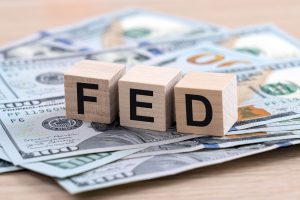In the world of finance, since everything orbits on the digital perspective, budgeting apps come right at the center of utility. Effective and easy-to-use budgeting tools continue to be in demand as customers strive to control their financial futures. With so many options available, it is crucial to understand the various features, costs, and functionalities of top budgeting apps.
Market Impact
The global budgeting app market is projected to reach $295 billion by 2026, according to a report by Fortune Business Insights. This surge is driven by growing financial literacy and increasing smartphone penetration, which allows individuals greater access to personal finance management tools right at their fingertips. In 2023, the increasing focus on household savings and prudent spending in the wake of economic uncertainties has also contributed to the rising popularity of these applications.
Comparing Popular Budgeting Applications
1. Mint: One of the most widely recognized budgeting apps, Mint offers users a free service that connects to their bank accounts and credit cards to provide a comprehensive overview of their finances. Users can track spending, set budgets, and receive personalized tips based on their financial habits. The app also features bill tracking which informs users of upcoming payments to avoid late fees.
2. YNAB (You Need A Budget): YNAB adopts a forward-thinking budgeting philosophy by emphasizing proactive money management. Priced at approximately $14.99 per month or $98.99 per year, YNAB encourages users to allocate every dollar and provides educational resources to promote financial awareness. By helping users break the paycheck-to-paycheck cycle, YNAB remains a popular choice among committed budgeters.
3. PocketGuard: For those looking for simplicity, PocketGuard presents an intuitive interface that allows users to see how much money they have available for spending after accounting for bills, goals, and necessities. The app offers a free version along with a Plus plan for $34.99 per year, which includes additional budgeting features. The emphasis on spending limits helps users control their finances with ease.
4. EveryDollar: Created by personal finance expert Dave Ramsey, EveryDollar uses a zero-based budgeting approach. The app is free to download, but users can opt for the paid version at $129.99 annually, which includes features linking to bank accounts. EveryDollar’s focus on categorizing expenses and tracking every dollar empowers users to make mindful financial choices.
Expert Opinion
Financial experts emphasize the importance of selecting a budgeting app that aligns with user lifestyle and financial goals. “Not all apps are created equal; choosing the one that suits your needs is crucial for sustained money management,” said financial advisor Melissa McCarthy. “For users seeking comprehensive features and educational resources, YNAB is a strong contender. However, for those who prefer ease of use, Mint or PocketGuard may be more beneficial.”
Background
The shift toward digital financial management started as early as the 2000s, but it has accelerated notably in the past five years. Many consumers are increasingly comfortable with technology and prefer managing their finances on mobile devices. A 2022 survey conducted by the National Endowment for Financial Education found that over 70% of millennials use technology for financial management, indicating a generational shift toward digital solutions.
What’s Next?
Looking ahead, developments in artificial intelligence (AI) and machine learning are expected to enhance the functionality of budgeting apps. Companies that invest in AI-driven features to offer personalized budgeting advice and spend analysis will gain a competitive edge in this growing market. Moreover, the integration of these technologies can facilitate more efficient financial planning processes for users, setting a new standard for digital financial management.
Overall, the rise of budgeting apps signifies a broader trend toward financial empowerment, providing users with essential tools to help manage their finances effectively. As the landscape continues to evolve, users are encouraged to explore the options that best align with their financial goals and preferences. For those on the financial brink, selecting the right app can make all the difference in achieving financial stability and independence.






